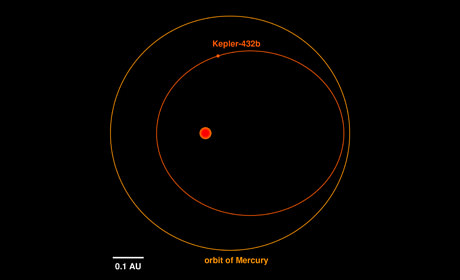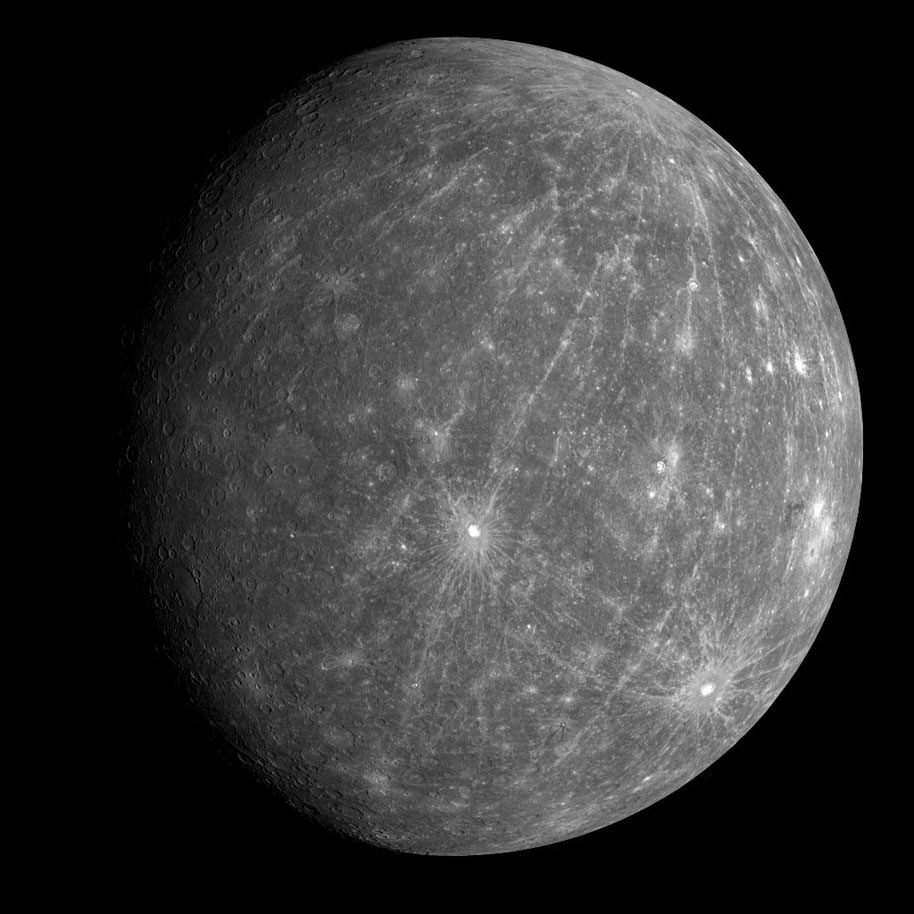Mercury is a planet of extremes. As the closest planet to our Sun, it experiences extremely high surface temperatures. But since it has virtually no atmosphere to speak of, and rotates very slowly on its axis, it gravitates between extremes of hot and cold. It also means that it’s Sun-facing side experiences prolonged periods of day while its dark side experiences extremely long periods of night.
It’s proximity to the Sun also means that it orbits the planet quite rapidly. To break it down, Mercury takes roughly 88 Earth days to complete a single orbit around the Sun. Between this rapid orbital period and its slow rotational period, a single year on Mercury is actually shorter than a single day!
Orbital Period:
Mercury orbits the Sun at a distance of 57,909,050 km (35,983,015 mi), which works out to o.387 AU – or slightly more than one-third the distance between the Sun and the Earth. It’s orbit is also highly eccentric, ranging from a distance of 46 million km/28.58 million mi at its closest (perihelion) to 70 million km/43.49 million mi at its most distant (aphelion).

Like all the planets, Mercury moves fastest when it is at its closest point to the Sun, and slowest when it is at its farthest. However, it’s proximity to the Sun means that its average orbital velocity is a speedy 47.362 kilometers a second or 29.429 miles per second – approximately 170,500 km/h; 105,945 mph.
At this rate, it takes Mercury 87.969 days, or the equivalent of 0.24 Earth years, to complete a single orbit of the Sun. Thus, it can be said that a year on Mercury lasts almost as long as 3 months here on Earth.
Sidereal and Solar Day:
Astronomers used to think that Mercury was tidally locked to the Sun, where its rotational period matched its orbital period. This would mean that the same side it always pointed towards the Sun, thus ensuring that one side was perennially sunny (and extremely hot) while the other experienced constant night (and freezing cold).
However, improved observations and studies of the planet have led scientists to conclude that in fact, the planet has a slow rotational period of 58.646 days. Compared to its orbital period of 88 days, this means that Mercury has a spin-orbit resonance of 3:2, which means that the planet makes three completes rotations on its axis for every two orbits it makes around the Sun.
Another consequences of its spin-orbit resonance is that there is a significance difference between the time it takes the planet to rotate once on its axis (a sidereal day) and the time it takes for the Sun to reappear in the same place in the sky (a solar day). On Mercury, it takes a 176 days for the Sun to rise, set, and return to the same place in the sky. This means, effectively, that a single day on Mercury lasts as long as two years!
Yes, Mercury is a pretty extreme place. Not only do temperatures on its surface range from molten hot to freezing cold, but a single day lasts as long as six months here on Earth. Add to that the fact that it has virtually no atmosphere, and is exposed to extreme amounts of radiation, and you can begin to understand why life cannot exist there.
At least… not yet!
We have written many interesting articles about Mercury here at Universe Today. Here’s How Long is a Day on Mercury?, How Long is a Year on the Other Planets?, Which Planet has the Longest Day?, How Long is a Year on Venus?, How Long is a Year on Earth?, How Long is a Year on Mars?, How Long is a Year on Jupiter?, How Long is a Year on Saturn?, How Long is a Year on Uranus?, How Long is a Year on Neptune?, and How Long is a Year on Pluto?
If you’d like more info on Mercury, check out NASA’s Solar System Exploration Guide, and here’s a link to NASA’s MESSENGER Misson Page.
We’ve also recorded an entire episode of Astronomy Cast all about Mercury. Listen here, Episode 49: Mercury.
Sources:


Another interesting thing is that the sun can move backward on Mercury and you can see two sunsets one after another (In a period of two months)
See a simulation here:
Yep! The retrograde motion of the Sun would be horribly annoying!